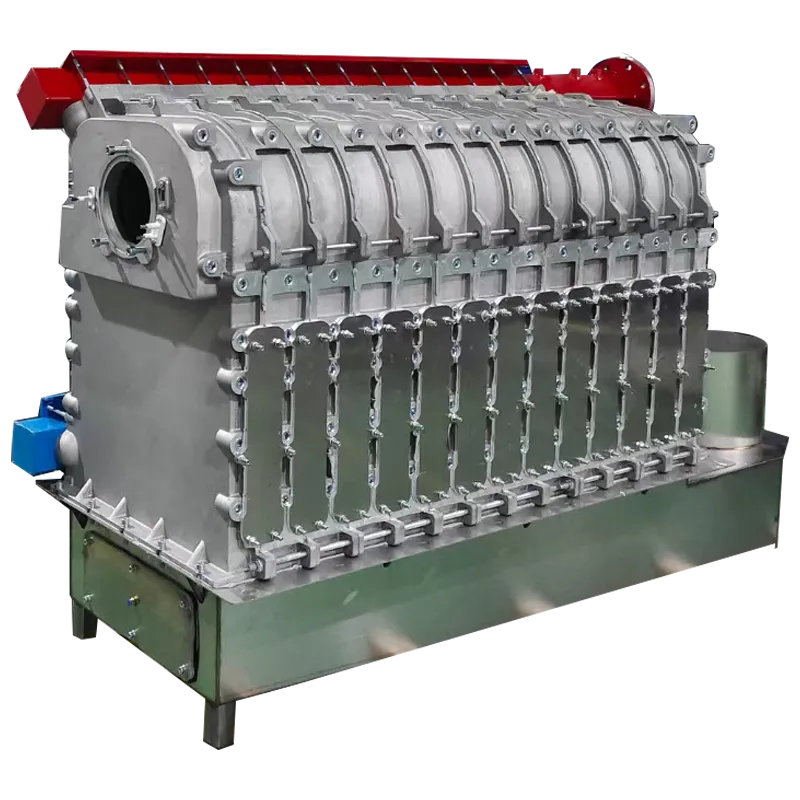Δεκ . 05, 2024 14:50 Back to list
oem sand cast
Understanding OEM Sand Casting An Overview
In the manufacturing industry, Original Equipment Manufacturer (OEM) sand casting is a crucial process that enables the creation of complex shapes and components with high precision. This method plays a vital role in various sectors, including automotive, aerospace, and machinery, where custom parts are often required. This article explores the essentials of OEM sand casting, its benefits, processes, and applications.
What is OEM Sand Casting?
OEM sand casting involves creating metal parts in large quantities according to specific designs or specifications provided by an OEM. The term sand casting refers to the sand-based mold used to form the desired shape of the metal component. It is particularly advantageous for producing intricate parts that would be challenging or cost-prohibitive to achieve through other manufacturing processes.
The Sand Casting Process
The sand casting process typically comprises several key steps
1. Pattern Creation The first step involves creating a pattern that reflects the desired component's shape. Patterns are often made from materials like metal, plastic, or wood and are designed to be slightly larger than the final product to accommodate the material contraction that occurs during cooling.
2. Mold Making The pattern is pressed into sand mixed with a binder to form a mold. This can be done using a variety of sand molding techniques, including green sand, resin sand, and lost foam. Each method has its characteristics and is chosen based on the specific requirements of the casting.
3. Melting and Pouring Next, the metal that will form the part is melted down in a furnace. Common metals used in sand casting include aluminum, iron, and bronze. Once the metal reaches the required temperature, it is poured into the mold cavity, filling it completely.
4. Cooling and Solidification After pouring, the metal is allowed to cool and solidify, which can take from a few minutes to several hours depending on the part's size and design.
oem sand cast

5. Mold Removal Once the metal has cooled, the sand mold is broken apart to reveal the casting. This stage may involve some cleaning processes to remove any sand residue or imperfections.
6. Finishing Touches Finally, the cast components undergo finishing operations such as grinding, machining, or surface treatment to ensure they meet specific quality standards and tolerances.
Benefits of OEM Sand Casting
One of the main advantages of OEM sand casting is its versatility. It can be used to create a wide variety of shapes and sizes, making it suitable for everything from small components to large heavy machinery parts. Additionally, sand casting allows for the use of numerous metals and alloys, providing manufacturers with a range of material options.
Cost-effectiveness is another critical benefit, particularly for high-volume production runs. The initial investment in patterns and molds may be significant, but the price per unit becomes lower with larger quantities, making sand casting economically viable.
Moreover, the sand casting process is relatively straightforward compared to other methods like die casting, which requires more complex tooling. This simplification can lead to faster production times and reduced lead times, which are essential in today’s fast-paced manufacturing environment.
Applications of OEM Sand Casting
OEM sand casting finds applications in numerous industries. In the automotive sector, it is used to manufacture engine blocks, transmission cases, and other critical components. In aerospace, sand-cast parts can be found in landing gears, structural supports, and engine casings. Additionally, heavy industries utilize sand casting for machinery parts, pumps, and valves.
Conclusion
OEM sand casting is a foundational manufacturing process that combines precision, versatility, and cost-effectiveness. As technology continues to advance, so do the techniques and materials used in sand casting, ensuring that it remains an integral part of modern manufacturing. Whether it’s producing parts for vehicles or complex aerospace components, sand casting will undoubtedly continue to play a vital role in meeting the demands of the industry.
-
Durable Centrifugally Cast Iron Water Main Pipe
NewsAug.11,2025
-
Centrifugally Cast Iron Water Main Pipes for Reliability
NewsAug.10,2025
-
High-Quality Centrifugally Cast Iron Water Main Pipes
NewsAug.09,2025
-
Durable Cast Iron Water Main Pipe & Drainage Solutions
NewsAug.08,2025
-
Buy Cast Iron Pipe: Premium Ductile Iron & Drain Solutions
NewsAug.07,2025
-
Durable Cast Iron Water Main Pipe | Buy Ductile Pipe
NewsAug.06,2025


